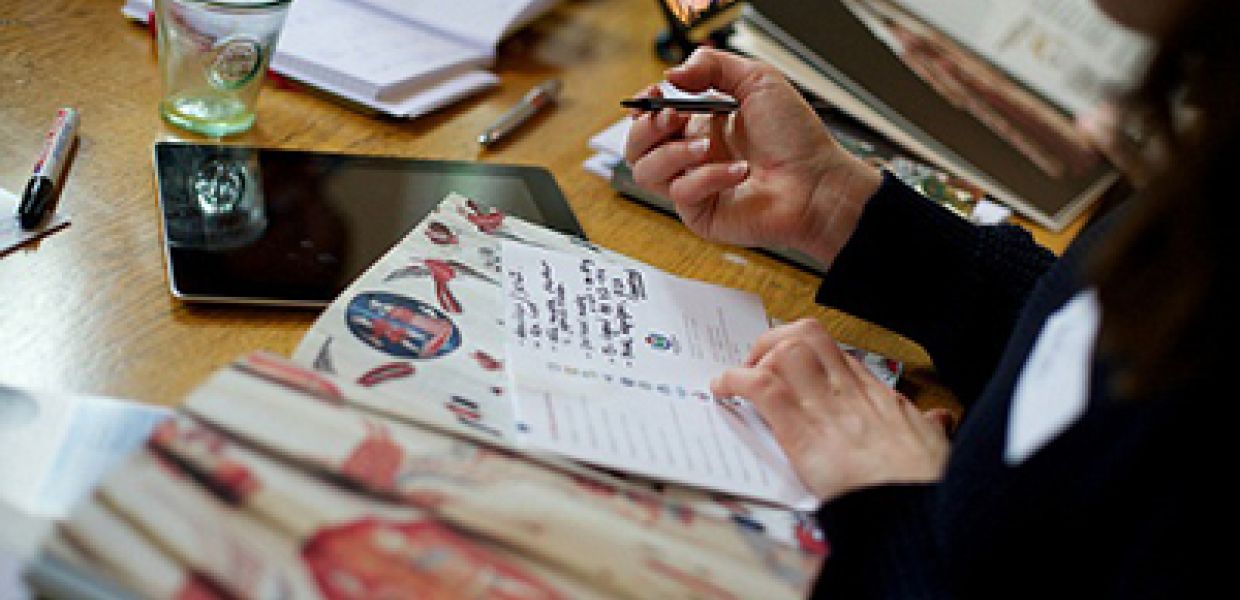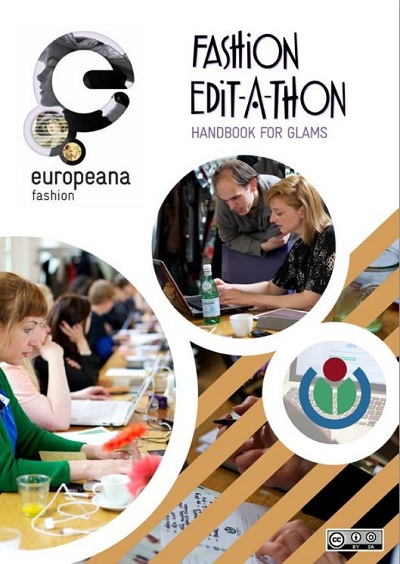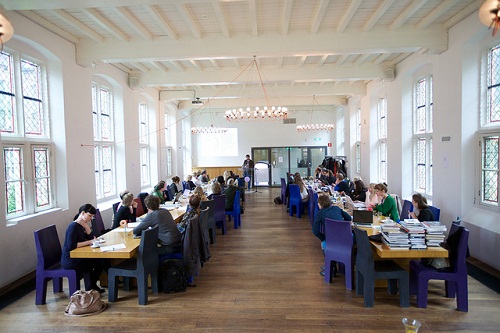A Guide to Editing Fashion on Wikipedia

Guest blog by Gregory Markus, Netherlands Institute for Sound and Vision.

An editathon in progress. Image by Sebastiaan ter Burg, CC BY-SA
In an effort to improve fashion knowledge on the web, Europeana Fashion has organised a series of editathons with Wikimedia volunteers and fashion institutions around Europe. The experience and knowledge gained from these events are now compiled in one handbook, The Europeana Fashion Edit-a-thon Handbook for GLAMs.

The cover of the handbook, CC BY-SA
Fashion and fashion history are undoubtedly significant cultural media. Whether we realise it or not, the clothes we choose to wear every day have historical roots and contemporary meaning. The blue jeans, the t-shirt, the sneaker or a shirt with a button-down collar all have an interesting history, which most of us seldom consider.
If someone did want to learn about fashion history, their first stop would most likely be Wikipedia. As fashion is under-represented in the online encyclopedia, their search may lead to disappointment.
Improving Fashion Knowledge Europeana Fashion aims not only to gather hundreds of thousands of digitised fashion objects, but also to increase the amount of fashion knowledge on the web and make it more visible. We try to accomplish this by organising Wikipedia edit-a-thons. An editathon is an event where people get together to edit Wikipedia, usually focusing on a specific topic.

An editathon in progress. Image by Sebastiaan ter Burg, CC BY-SA
Partnering with Wikimedia and having editathons benefits all parties involved:
- They help spread the word about the work Europeana Fashion is doing;
- They improve public knowledge about fashion history on Wikipedia;
- They provide contextualisation to the beautiful material Europeana Fashion puts online;
- They connect different communities, bring them together around a shared passion and offer professionals in the field an opportunity to network;
- They stimulate participating partners to reflect on ways to make their collections accessible.
The Handbook
These benefits, along with guidelines and tips on how to organise an editathon, are listed in the handbook. Loads of experiences, expertise, and research made this handbook possible. So far, Europeana Fashion has coordinated editathons at institutions in Israel, Belgium, The Netherlands, France, Sweden and Italy. Members from these participating institutions, along with Wikimedians from across Europe, assisted and reviewed the work done by the Netherlands Institute for Sound and Vision, which oversee Europeana Fashion’s collaboration with Wikimedia.
In the handbook, any GLAM (Gallery, Library, Archive, Museum) can find all the basics to host an editathon, including an overview of Wikimedia, Wikipedia and Wikimedians, ways to ensure a successful editathon, how to measure success, tips for getting content on Wikimedia, event promotion, as well as a suggested day programme, a 3-month preparation agenda, and an abundance of relevant links.
Wikimedia and GLAMs
This handbook comes at a crucial time for GLAMs and Wikimedia. Recently, there has been a surge of institutions that are looking to become more open and make their collections more accessible to the public online. The handbook is not Europeana’s first collaboration with Wikimedia. There is also the GLAMwiki Toolset Project, which strives to make it easier for institutions to batch upload content to Wikimedia Commons.
Wikimedia is perhaps the most widely known organisation in the world that strives to make information more ‘open’. In the words of founder Jimmy Wales, ‘Imagine a world in which every single human being can freely share in the sum of all knowledge’. Europeana Fashion shares this goal with a specific focus on fashion objects, making Europeana Fashion the perfect intermediary between fashion institutions and Wikimedia, two bodies that rarely meet. The editathons offer fashion institutions the opportunity to get comfortable working with Wikimedians and vice-versa, to learn about opening up their collections and to give the public a participatory opportunity to help make cultural heritage more inclusive and raise ‘open’ awareness.
This handbook will help any GLAM (not just fashion institutions) organise a successful editathon and make Wikipedia richer. We hope that by increasing the publicity of these editathons, more GLAMs will follow suit, causing a domino effect. You can download it here.
